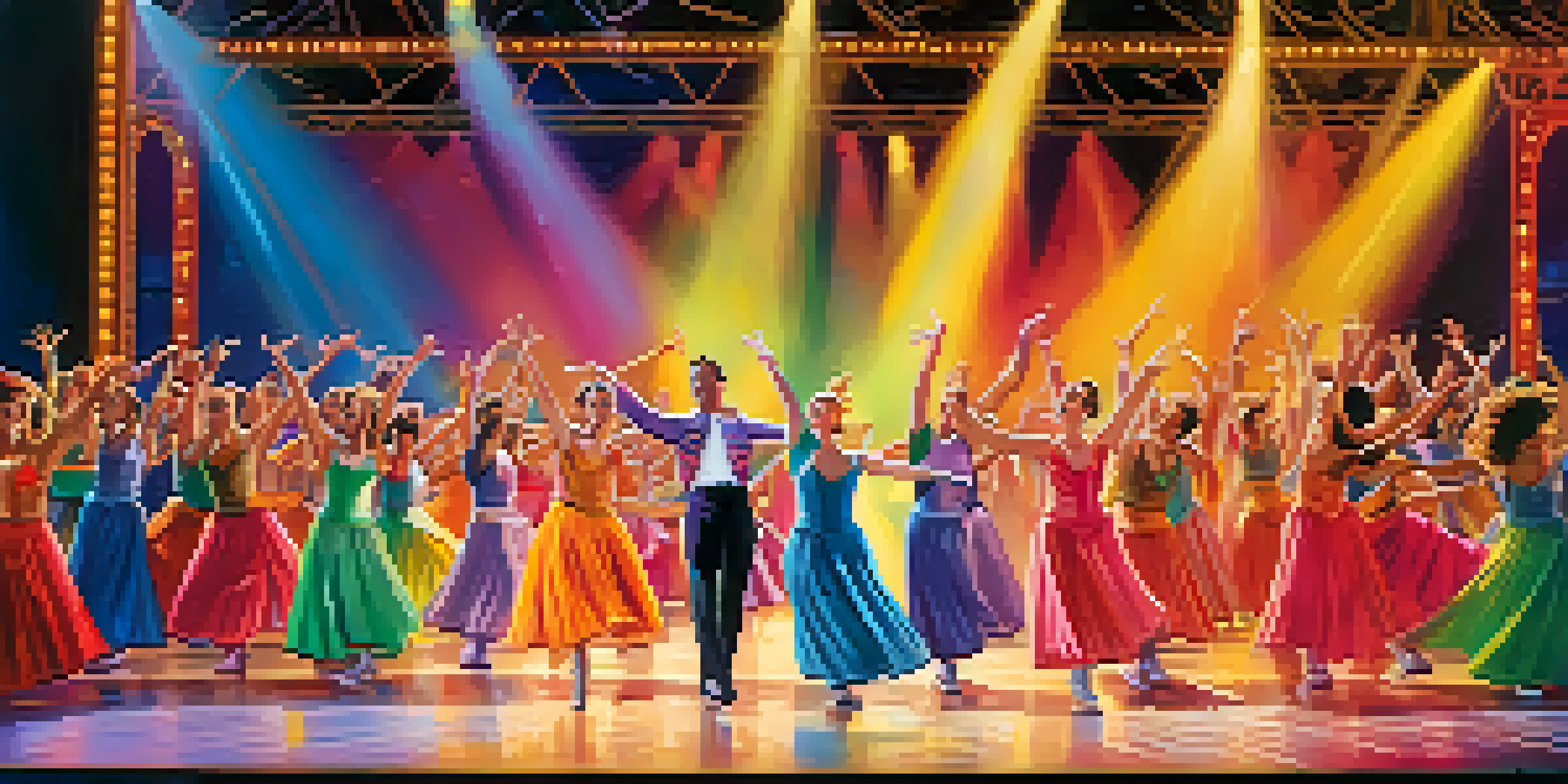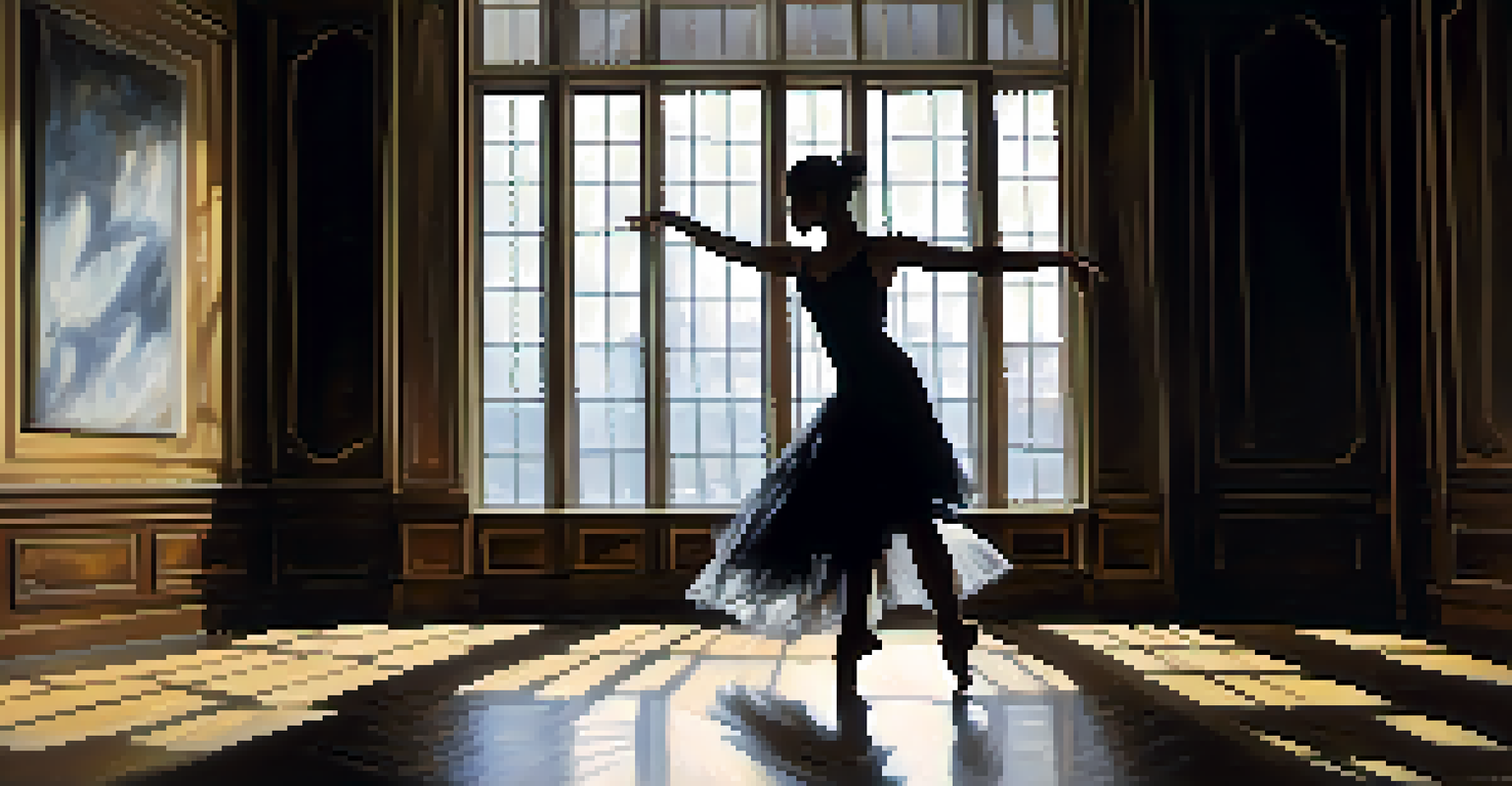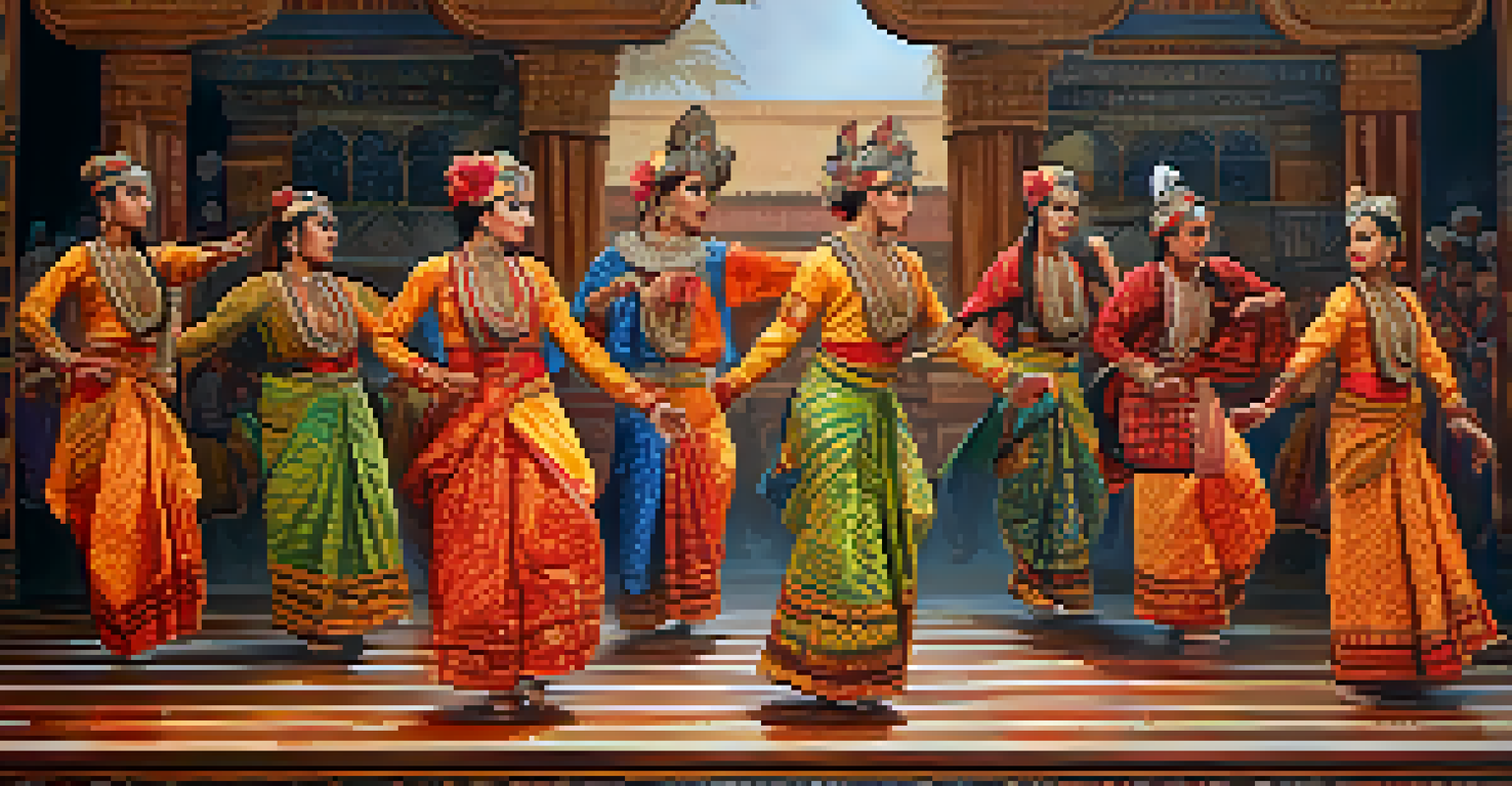Musicals vs. Dramatic Films: The Role of Dance Differentiated

Understanding the Essence of Musicals and Dramatic Films
Musicals and dramatic films are two vibrant genres that offer unique storytelling techniques. At their core, musicals are characterized by the integration of song and dance to convey emotions and advance the plot. In contrast, dramatic films typically rely on dialogue and visual storytelling, using acting to express the characters' inner worlds.
Dance is the hidden language of the soul.
The distinction between the two genres becomes particularly evident when examining their structure. Musicals weave musical numbers seamlessly into the narrative, often using dance as a form of expression that adds depth to the story. Dramatic films, however, often build tension and emotion through well-crafted scenes that focus on dialogue and visual elements without the aid of song and dance.
Ultimately, both genres aim to evoke feelings and engage the audience, but they do so through different artistic lenses. Understanding these foundational differences sets the stage for a deeper exploration of how dance plays a role in each genre.
The Role of Dance in Musicals: Expression and Storytelling
In musicals, dance serves as an essential medium for expression, allowing characters to convey emotions that words alone cannot. Think of iconic scenes like those in 'West Side Story,' where dance becomes a powerful narrative device, reflecting the characters' passions and conflicts. Each movement tells a story, enhancing the viewer's emotional connection to the characters.

Moreover, choreography in musicals often mirrors the themes of the story, reinforcing key motifs. For instance, a dance number may illustrate love, joy, or conflict, with each step and leap representing an emotional high or low. This dynamic relationship between movement and narrative creates an immersive experience for the audience.
Dance Enhances Storytelling
In musicals, dance serves as a vital narrative tool, conveying emotions and advancing the plot in ways that dialogue alone cannot.
In this way, dance transforms the musical into a multi-sensory experience, captivating viewers with its rhythm and energy. It's not just about entertainment; it's a vital part of storytelling that invites audiences to feel alongside the characters.
Dance in Dramatic Films: Subtlety and Symbolism
While dance is not always central in dramatic films, when it does appear, it often carries significant weight. In these films, dance can symbolize deeper themes, such as freedom, conflict, or identity. A poignant example is the dance scene in 'Black Swan,' where the protagonist's struggle with her duality is powerfully illustrated through movement.
Musicals are a form of storytelling that uses song and dance to convey emotions and advance the plot.
In dramatic contexts, dance tends to be more nuanced, serving as a metaphor rather than a primary means of expression. This subtlety allows filmmakers to explore complex emotions without overt exposition. The viewer is encouraged to interpret the dance within the broader narrative framework, enhancing the film's thematic depth.
Thus, dance in dramatic films often enriches the story by providing layers of meaning, allowing audiences to engage with the characters on a deeper emotional level. It's a reminder that movement can convey complexity, even in the absence of song.
Choreography: A Tool for Narrative Advancement
Choreography plays a critical role in both musicals and dramatic films, but its purpose can vary significantly. In musicals, choreography is often designed to be flashy and captivating, drawing the audience into the story through vibrant performances. Each dance number is a carefully crafted spectacle that enhances the narrative and entertains.
Conversely, in dramatic films, choreographed movement is often used more sparingly and with a focus on realism. It may appear in a scene to emphasize a character's emotional state or to symbolize a pivotal moment in the storyline. The choreography is less about showmanship and more about enhancing the authenticity of the narrative.
Cultural Reflection Through Dance
Both genres utilize dance to reflect cultural contexts, with musicals celebrating diverse styles and dramatic films commenting on societal issues.
Regardless of the genre, choreography serves as a bridge between the audience and the story, inviting viewers to experience the characters' journeys through movement. This distinction highlights how dance, while integral in both forms, fulfills different roles depending on the narrative context.
Audience Engagement: Dance as a Connection Tool
The way dance engages audiences differs in musicals and dramatic films, shaping the viewer's experience. In musicals, the energetic and often exuberant dance numbers invite audiences to join in the joy or tension of the moment. It's common to leave a musical feeling uplifted, as the dance elements work together to create a collective emotional experience.
In contrast, dance in dramatic films often serves to provoke thought and reflection. The subtlety of movement can lead to a more introspective viewing experience, where audiences may ponder the underlying meanings and emotions portrayed. This invites viewers to connect with the characters in a more personal and contemplative manner.
Both genres utilize dance to forge connections with the audience, but they do so through different emotional pathways. Whether through exuberance or introspection, dance has the power to resonate with viewers, leaving lasting impressions long after the credits roll.
Cultural Influence: Dance as a Reflection of Society
Dance in both musicals and dramatic films often reflects the cultural context in which it is created. Musicals, for instance, tend to embrace diverse dance styles that celebrate various cultural backgrounds, showcasing a rich tapestry of tradition and innovation. This not only entertains but also educates audiences about different cultural narratives and experiences.
Dramatic films, on the other hand, may use dance as a means to comment on societal issues or historical contexts. A film like 'Footloose' underscores the importance of self-expression and rebellion against societal norms through dance, highlighting its power as a form of resistance and change. Here, movement becomes a statement, a reflection of the characters' struggles against the backdrop of their society.
Evolution of Dance in Film
The role of dance in film has evolved, transitioning from lavish numbers in early musicals to nuanced expressions in contemporary dramatic storytelling.
Thus, dance serves as a mirror, reflecting cultural values and societal changes in both genres. By examining how dance is portrayed, we gain insight into the cultural narratives that shape our understanding of the human experience.
The Evolution of Dance in Film: A Historical Perspective
The role of dance in both musicals and dramatic films has evolved significantly over the decades. Early musicals, such as those from the Golden Age of Hollywood, showcased lavish dance numbers that were integral to the storytelling experience. Stars like Fred Astaire and Ginger Rogers became icons, demonstrating that dance could elevate a film to new heights of entertainment.
In contrast, dramatic films have gradually incorporated dance as a storytelling device, often using it sparingly but effectively. Over time, filmmakers have recognized the emotional power of movement, integrating it into narratives to enhance character development and thematic depth. This evolution has allowed dance to become a subtle yet impactful element in dramatic storytelling.

Today, both genres continue to explore the role of dance, pushing boundaries and experimenting with new forms of expression. This ongoing evolution highlights the flexibility of dance as an art form, adapting to the changing landscape of film while remaining a vital component of storytelling.